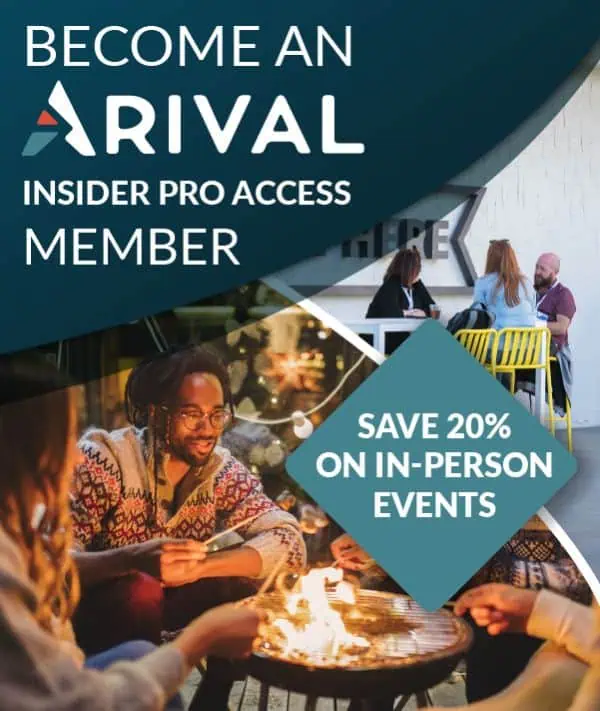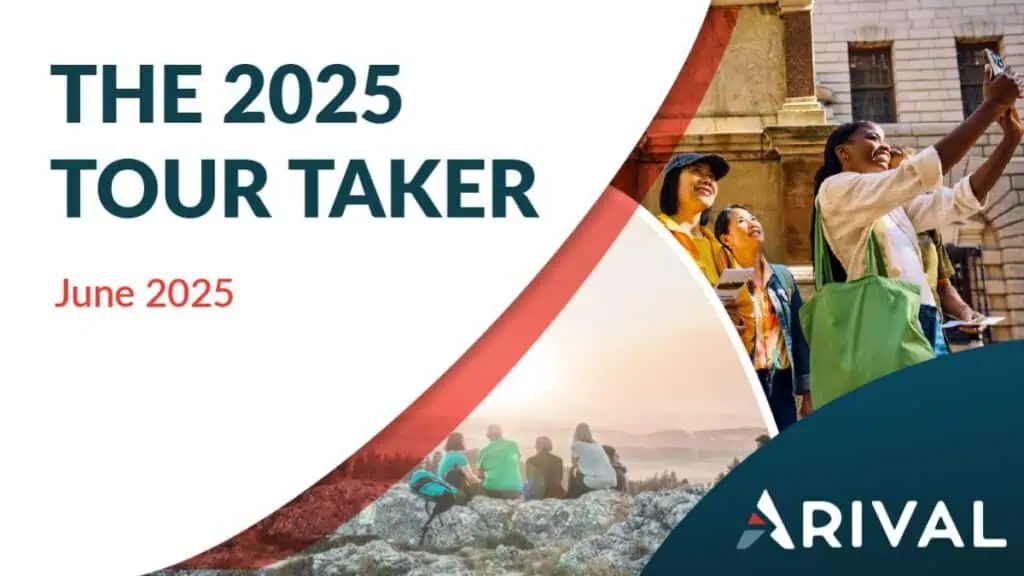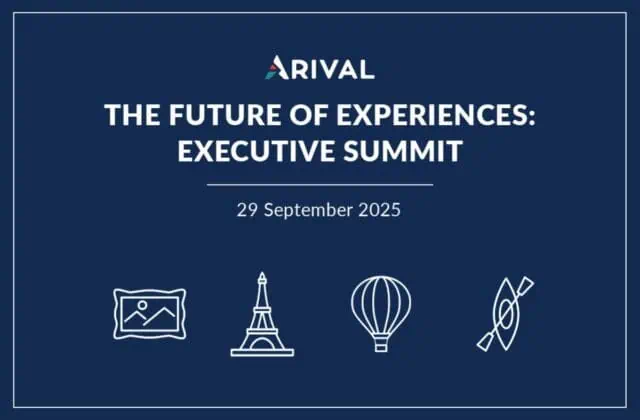As 2023 approached, Jonathan Porter — owner of the legendary Chicago Pizza Tours — decided to make some changes to his business. Instead of spending money on marketing focused on tourists, he invested in a new revenue stream for his business — corporate groups.
The results? Chicago Pizza Tours generated a staggering $100k in new corporate group revenue in just six months. Now, in 2024, corporate groups have become the dominant channel for Chicago Pizza Tours. What once made up less than 5% of their total revenue now represents over 60%.
Porter’s gamble paid off — here’s how any tour business operator can follow his example.
The Path to 5x Revenue in Corporate Groups
Focusing a portion of your tour business on corporate group experiences isn’t just about winning immediate revenue, it’s about strategically establishing a growth model that actually keeps growing.
Like any new revenue stream, without the right foundation and ongoing plan, it won’t keep producing in the long run. Here’s a snapshot of how you might envision a road to 5x.
- Year 0: Begin offering corporate tours and make some revenue (let’s say it’s Chicago Pizza Tours’ $100k!)
- Year 1: Save and reinvest your $100k back into developing your corporate tours and site.
- Year 2: Additional revenue from repeat bookings (20%), cross-departmental bookings (15%), external referrals (10%), and individual bookings from corporate participants (5%) brings the total to $150k.
- Year 3: The compounded effect of these growth strategies on both the original and Year 2’s additional revenue leads to a total of $225k per year.
This snapshot shows how offering a corporate tour experience, combined with a strategic approach to customer engagement and satisfaction, can lead to huge growth.
Starting in Year 0, let’s get into the steps you need to take.
30 September – 3 October 2025
Insider Pro Access Members Save 20%
THE event of the year for solutions-focused In-Destination Experience creators and sellers
Get Your Spring Savings Ticket Today!
1) Create a webpage specifically for corporate guests.
Nobody wants to be talked to and sold to like everyone else.
Different audiences visiting your site should find unique pages that speak directly to them. That means developing dedicated pages for corporate clients, departing from the generalized approach of a universal private tour page.
If you’re in the tour business, you gotta have groups,” says Arival CCO and Co-Founder Bruce Rosard, “and you gotta treat them separately” from your public tour business.
This lets you acknowledge on the page that corporate groups have particular needs and expectations that warrant a more specialized focus, unlike bachelorette parties, church groups, or student groups. Now your content mirrors the personalized and professional interaction these clients would expect in person, providing them with the service they deserve.

2) Make corporate groups a bigger part of your site
It might seem self-explanatory, but people won’t buy what they can’t find and don’t understand.
Upon visiting your website, corporate group experiences should immediately be highlighted as a primary offering, ensuring potential corporate clients know you offer them.
Additionally, the homepage should feature two prominent buttons: one to compare tours for public guests and a second dedicated specifically to corporate groups. This dual-button approach allows visitors to choose which path best suits their interests quickly.
Note: While some tour operators may prefer promoting “private experiences” broadly, there is a strategic advantage in focusing on “corporate groups.” The rationale is that the volume of corporate groups alone can sufficiently sustain your revenue. By capturing a larger share of this market, you can reduce the need for the custom arrangements required for other types of private events like church groups, bachelor/bachelorette parties, or student organizations.

According to conversion research, pages not directly related to the booking process, like “About” pages, are rarely part of the customer journey.
So, move that content down to the footer, allowing for a cleaner, more focused navigation. This simplifies the primary action for users so they can quickly choose between a public tour or a corporate group experience and makes the path to booking easy.
3) Continue to add new value and raise those prices
Avoid simply multiplying the public tour price by a set factor to determine corporate tour costs.
Example: At $100/ticket, many tours charge $2,000 for a group of 20.
This approach often overlooks the specific value corporate clients seek.
Begin by recognizing that corporate clients don’t have a benchmark for the cost of unique experiences. And then use strategies like price anchoring, that allow you to present multiple pricing tiers, making it evident that the value provided at each level justifies the cost.
This methodology enables corporate clients to compare different levels of service and pricing, facilitating more informed decision-making.
Porter began utilizing the psychological concept of price anchoring to further refine his pricing strategies. Recognizing that when a tour offers only a single price, clients have no immediate comparison, which often leads them to measure the cost against unrelated experiences, such as an evening out at a bar.
This lack of context does not aid in decision-making.
To counter this, similar to strategies used by pioneers like Alyssa Schoenfeld, Founder of Bites of Boston: develop new pricing models at 2x and 5x the current ticket price.
These options provide tangible alternatives that highlight the comparative value of each offering, assisting clients in making choices that align with their expectations and budget.
4) Have a structured process for B2B sales
Having a clearly defined sales process is crucial in the realm of B2B sales, especially when dealing with corporate clients who expect professionalism and promptness. When a lead contacts you, the opportunity must be seized immediately; there’s no room for delays or oversight in follow-up.
Porter has meticulously designed each step of his sales process, ensuring that every email interaction is planned and purposeful, streamlining the process for both his team and himself. This structured approach minimizes the chances of miscommunication and maximizes efficiency in converting leads to sales.
Some tour operators have taken this structured approach to an even higher level by leveraging technology to enhance their sales systems. They set up their Customer Relationship Management (CRM) systems specifically to handle private experiences.
By integrating automations, these operators ensure consistent follow-ups with groups that have shown interest but haven’t yet closed, as well as those who have already enjoyed their experiences. Automated prompts encourage satisfied clients to refer the tour to other departments within their organization or to colleagues, expanding the potential client base without additional manual effort.
This not only ensures that no opportunity is missed but also maintains a high standard of customer engagement and satisfaction.
5) Send emails about corporate groups
Porter’s strategic use of his email list has played a pivotal role in quintupling his revenue from corporate groups. Recognizing the potential in direct communication, he carefully avoided overwhelming his subscribers with overt sales pitches. Instead, he tailored his messages to subtly integrate information about his new corporate offers, ensuring the content was relevant and engaging.
He specifically targeted two crucial segments of his mailing list. The first segment included past public tour guests, who might not be aware of the corporate offerings available. By informing them of these options, Porter opened a new avenue for these individuals to consider his services in a different, more business-oriented context.
The second targeted group was past corporate clients who had not been followed up with adequately. The emails to this group were crafted not only to encourage them to rebook but also to share the opportunity with colleagues. This approach leverages the network effect, potentially reaching other departments within their company or professional contacts within the community, thus expanding his reach and impact significantly.
Keep in Touch with Past Groups: Increase your corporate business by maintaining the relationships you’ve already established. A targeted, long term email campaign with that segment of your email list will keep your company at the forefront of your past clients’ minds when it’s time for them to book another event.
Join us at an upcoming Arival event to connect, learn, & grow your tours, activities, & attractions business
6) Outreach to corporate groups
Finding new corporate groups for your tours can be a game-changer for revenue growth. By tapping into strategic resources and networks, you can significantly expand your client base. Here are some effective places to look for potential corporate clients:
- Concierge & event planners at local hotels: When conferences and corporate groups come to town, your relationships with these key allies can steer corporate groups to your tour.
- Fortune 500/100 companies in your city: Performing a simple search for the big companies in your market will tell you where to start engaging on platforms like LinkedIn. Companies like these have multiple departments and divisions that could benefit from your tour.
- Host a webinar: Once you’ve made some contacts in the corporate or DMC spheres, hosting simple webinars around things to do in your community can provide free value to the attendees, and act as a stage to highlight the tour destinations you offer.
- Engage on LinkedIn: Following, liking, and messaging your target clients on LinkedIn is a great way to get your business in front of the people — like event planners, team leads, and executive assistants — who could most benefit from your tour.
- Share your blogs on LinkedIn: Instead of worrying about whether your blog articles will return highly on a Google search, use them in a targeted way as content for your LinkedIn posts and DMs. Sharing your content this way will keep you top of mind with your target clients, and provide them value that they’ll associate with your brand.
- DMCs: Destination Management Companies are tasked with planning and executing huge, often days-long corporate retreats and events. They’re always looking for companies like yours to provide their clients with a great time.
- Get listed in “Top 10” blogs: A quick Google search of the top things to do in your area for corporate groups will return a number of popular local blogs. Reach out to those bloggers and see if they’ll include you on their lists. It brings credibility and visibility to your brand, and puts your company in front of your target client who is likely performing similar searches.
By strategically utilizing these resources, you position your business to attract and engage with more corporate clients, thereby enhancing your brand’s reach and boosting your revenue. Remember, each interaction represents a potential partnership, so approach each opportunity with professionalism and a clear strategy.
Is 5x On Your Horizon?
The growth of your business doesn’t come down to any one thing. More likely, it revolves around the careful and purposeful application of a handful of strategic best-practices used over time. These above ideas are meant to get you on the road to a 5x revenue bump, but the real question should be:
Who says 5x is as high as you can go?
About the Author

Joe Martin is a business growth consultant and TEDx speaker, as well as Founder and CEO of UpLevel Tourism, which focuses on helping tour companies increase their corporate group bookings.
Learn More about Working With Corporate Groups
Join us at the next Arival event to learn more about growth, strategy and increasing your bookings, including by working with corporate groups.
Insider Pro Access members can also watch our recent Insider Pro Meetup on Getting Started Selling Corporate Tours, available on-demand now.
Become an Insider Pro Access member today and get access to the full library of Arival research, plus many other benefits such as free consulting sessions, special discounts and 20% off in-person events, starting from $179 per year.
Sign up to receive insights tailored for the in-destination industry as well as updates on Arival.

















